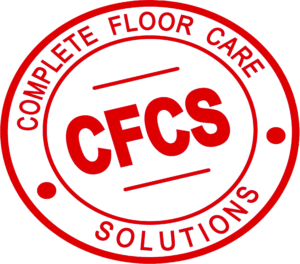![]()

The permanent wearlayer solution to combat germs on hospital floors. Every day, germs are introduced onto the floors of hospitals, nursing homes, doctor’s offices, surgical centers and other medical facilities due to ongoing public traffic. This can lead to serious and often fatal infections, particularly in the inpatient sector, especially when the germs are multi-resistant strains. Infections caused by multi-resistant bacteria and viruses are among the most frequent causes of death in the healthcare sector worldwide.
THE PROBLEM IS AT OUR FEET
As recent health studies conducted at Germany’s leading University Hospital, the Charité in Berlin, and the University of Jena have shown, the primary source of viruses and bacteria in hospitals is on the floors, particularly for multi-resistant germs. In a study conducted over 30 weeks, bacterial colonization in patient rooms of a neurological ward was investigated, revealing that environmental germs were largely replaced by bacteria, which multiplied rapidly.
In conclusion, the problem lies at our feet. While there were only a few positive findings on door handles and in wash basins, the accumulation of resistant germs on the floor over time was significant. “We have to assume that these germs could evolve into pathogens,” says Hortense Slevogt, head of the working group in Jena. “Therefore, it is imperative that we urgently investigate why these germs can multiply on the floor and identify transmission mechanisms for resistant germs.”
These findings were reported by researchers at Jena University Hospital and Charité in the ANTIBIOTICS RESISTANCE Hospital Magazine on August 17, 2021.

THE NIH, NHS, DIN 13063 (HOSPITAL NORMS), TRBA 250 AND THE GERMAN COMMISSION FOR HOSPITAL HYGIENE AND INFECTION PREVENTION RECOMMEND NON-BIOCIDAL SOLUTIONS
According to NIH, NHS, and DIN 13063 guidelines, hospitals are required to ensure that their disinfection procedures remain up-to-date and optimal. “Substitution testing is mandated in §§6 and 16 of the Ordinance on Hazardous Substances. This entails assessing whether, in the case of biocidal products, their usage can be minimized by considering physical, chemical, and other alternatives.” The TRBA 250 stipulates that resilient floors should be installed without joints to prevent the penetration of cleaning or disinfectant solutions into the floor, as well as to inhibit bacterial growth. In the health sheet 10/2022 (KRINKO recommendation for surfaces) issued by the Robert Koch Institute, antimicrobial surface finishes are described as a solution “to permanently reduce the pathogen load on surfaces in the time between disinfecting surface cleaning.” Finishes that assist in reducing germs and germ colonization aim to bridge the hygiene gap.


CONVENTIONAL CLEANING
In healthcare areas, floors are usually mopped once a day with a surface disinfectant cleaner that kills bacteria and viruses. After disinfection, however, these germs grow back and multiply on the surface in the 24 hours until the next disinfection.

VIROBAC
VIROBAC wear layers work with the in-situ environment to create a continuously disinfecting effect, without the use of disinfectants or antimicrobials, helping to prevent the rapid growth of bacteria and viruses and thus assisting in preventing the formation of resistant hospital germs.

THE MODE OF ACTION OF VIROBAC
The floor wear layer, with a revolutionary mechanism of action, works permanently by interacting with the in-situ environment. VIROBAC catalysts interact with freely available light, air and water vapor, allowing the room atmosphere itself to create singular oxygen. This dynamic is based on the activation of a photocatalyst with any light from the visible spectrum. The energy transfer to the surrounding environment creates singlet dioxygen (O2). This O2 then destroys the cell wall and effectively kills the germs through oxidation, leading to a massive reduction in germs and thus a significant minimization of risk.
In conclusion, singlet oxygen (O2) is a powerful oxidant that binds to many organic surfaces. This highly reactive form of oxygen damages cell components, especially lipids, and thus kills bacteria and viruses on surfaces. At the same time, conventional biocides with their harmful side effects on room air, patients and the environment are dispensed with.
Dr. Schutz VIROBAC is the only permanent floor wear layer of its kind with internationally independently tested effectiveness.

VIROBAC MEETS ALL REQUIREMENTS FOR USE IN HOSPITALS, NURSING HOMES, OUT-PATIENT FACILITIES, ETC:
- Permanently effective – wet or dry
- Has a long-lasting effect – tests show the effectiveness even after 5+ years
- Sustainable, because germs do not develop resistance
- Harmless to health, as no biocides, virucides, fungicide, metals or nanoparticles are used
- Slip resistant according to ASTM, ANSI and International standards
- Resistant to all common cleaning agents and disinfectants
- Minimizing maintenance cost because only standard floor care measures are necessary
- Universally applicable on all hard floors – new or existing
- Can be easily repaired or renovated at any time if needed
- Floors are easy to clean and joints are permanently hermetically sealed
SUSTAINABLE & ECONOMICAL
- 80% water savings over a period of 10 years
- 4 tons less waste compared to floor replacement (for 1000 m2)
- 1,270 kg less CO2 for 1000 ft2
- >50% less maintenance costs

